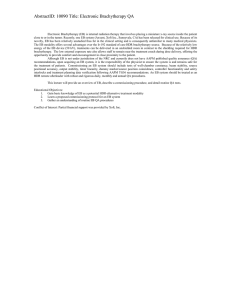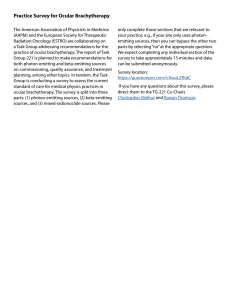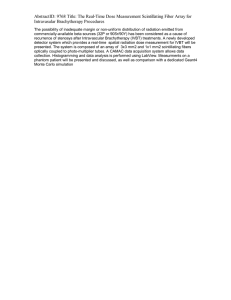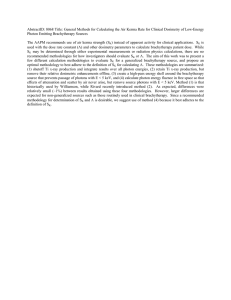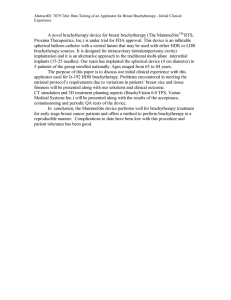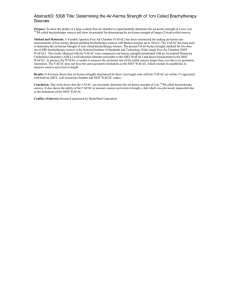AbstractID: 5333 Title: Ion loss measurements for a large-volume free-air... chamber
advertisement
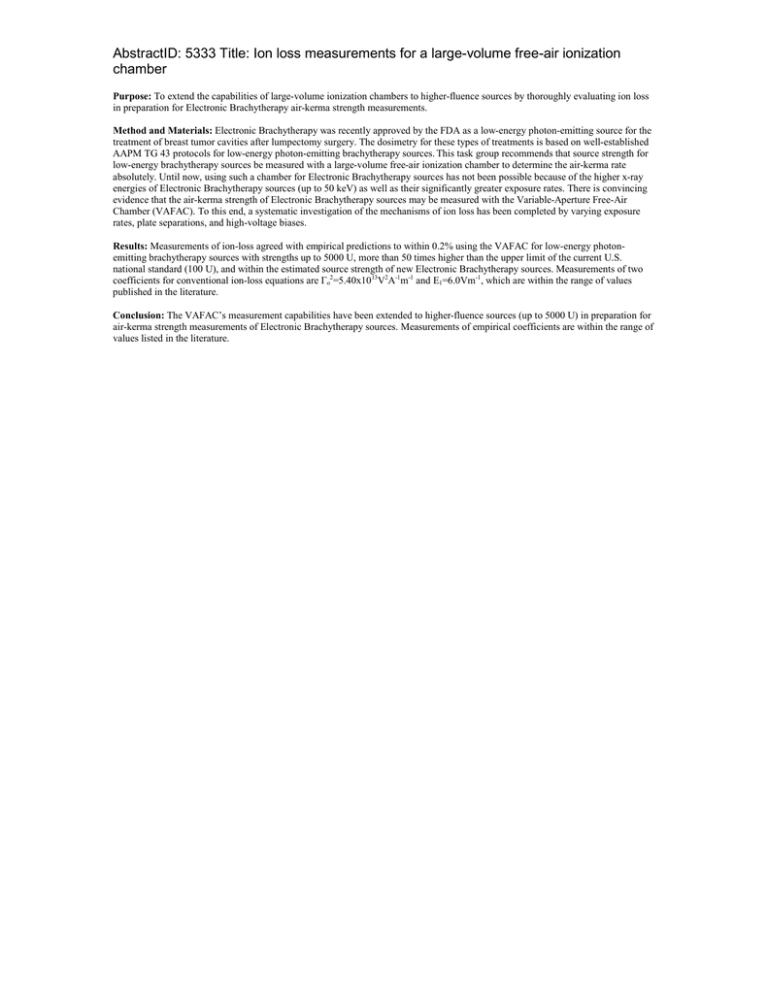
AbstractID: 5333 Title: Ion loss measurements for a large-volume free-air ionization chamber Purpose: To extend the capabilities of large-volume ionization chambers to higher-fluence sources by thoroughly evaluating ion loss in preparation for Electronic Brachytherapy air-kerma strength measurements. Method and Materials: Electronic Brachytherapy was recently approved by the FDA as a low-energy photon-emitting source for the treatment of breast tumor cavities after lumpectomy surgery. The dosimetry for these types of treatments is based on well-established AAPM TG 43 protocols for low-energy photon-emitting brachytherapy sources. This task group recommends that source strength for low-energy brachytherapy sources be measured with a large-volume free-air ionization chamber to determine the air-kerma rate absolutely. Until now, using such a chamber for Electronic Brachytherapy sources has not been possible because of the higher x-ray energies of Electronic Brachytherapy sources (up to 50 keV) as well as their significantly greater exposure rates. There is convincing evidence that the air-kerma strength of Electronic Brachytherapy sources may be measured with the Variable-Aperture Free-Air Chamber (VAFAC). To this end, a systematic investigation of the mechanisms of ion loss has been completed by varying exposure rates, plate separations, and high-voltage biases. Results: Measurements of ion-loss agreed with empirical predictions to within 0.2% using the VAFAC for low-energy photonemitting brachytherapy sources with strengths up to 5000 U, more than 50 times higher than the upper limit of the current U.S. national standard (100 U), and within the estimated source strength of new Electronic Brachytherapy sources. Measurements of two coefficients for conventional ion-loss equations are o2=5.40x1013V2A-1m-1 and E1=6.0Vm-1, which are within the range of values published in the literature. Conclusion: The VAFAC’s measurement capabilities have been extended to higher-fluence sources (up to 5000 U) in preparation for air-kerma strength measurements of Electronic Brachytherapy sources. Measurements of empirical coefficients are within the range of values listed in the literature.
